Order books for the plug-in hybrid Skoda Kodiaq iV have opened in the UK, with the new family SUV offering an electric range of 75 miles for £41,935.
Its powertrain pairs a 148bhp turbocharged four-cylinder petrol engine with a gearbox-mounted 114bhp electric motor, which combine to put out up to 204bhp and 258lb ft.
Its battery has a capacity of 25.7kWh (19.7kWh of which is usable) to give a range of 75 miles between charges. It can be replenished at up to 50kW on a DC rapid charger.
The entry-level plug-in hybrid is £5290 more than the comparable petrol model (£36,645), which uses the same engine but with 48V mild-hybrid assistance.
That base price is for the Kodiaq SE, which has 18in wheels and comes with LED lights, heated front seats and keyless start.
Mid-rung SE L, meanwhile, bumps the price up to £40,205 and adds 19in wheels, matrix headlights, an electrically adjustable driver's seat and leather upholstery.
A new range-topping high-spec Sportline variant will be added to the roster later this year, raising the price nearer to £45,000.
The hot Kodiaq vRS is tipped to return later on, with four-wheel drive and nearly 300bhp.
Deliveries are scheduled to begin imminently.
The Czech brand's reinvented flagship is the first production car to be styled with elements from the 'Modern Solid' philosophy previewed by the Vision 7S concept, which gives the new Kodiaq a more overtly rugged and utilitarian billing than its predecessor.
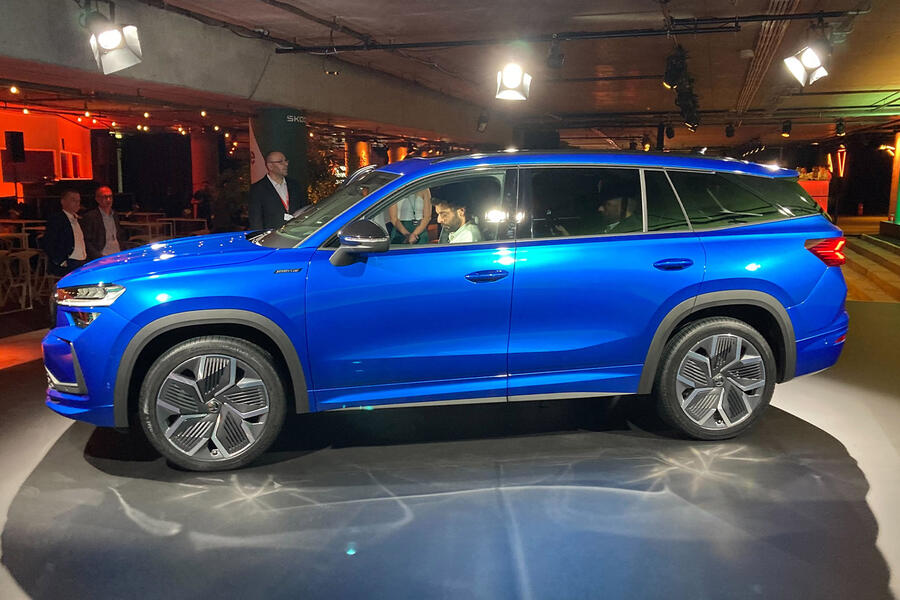

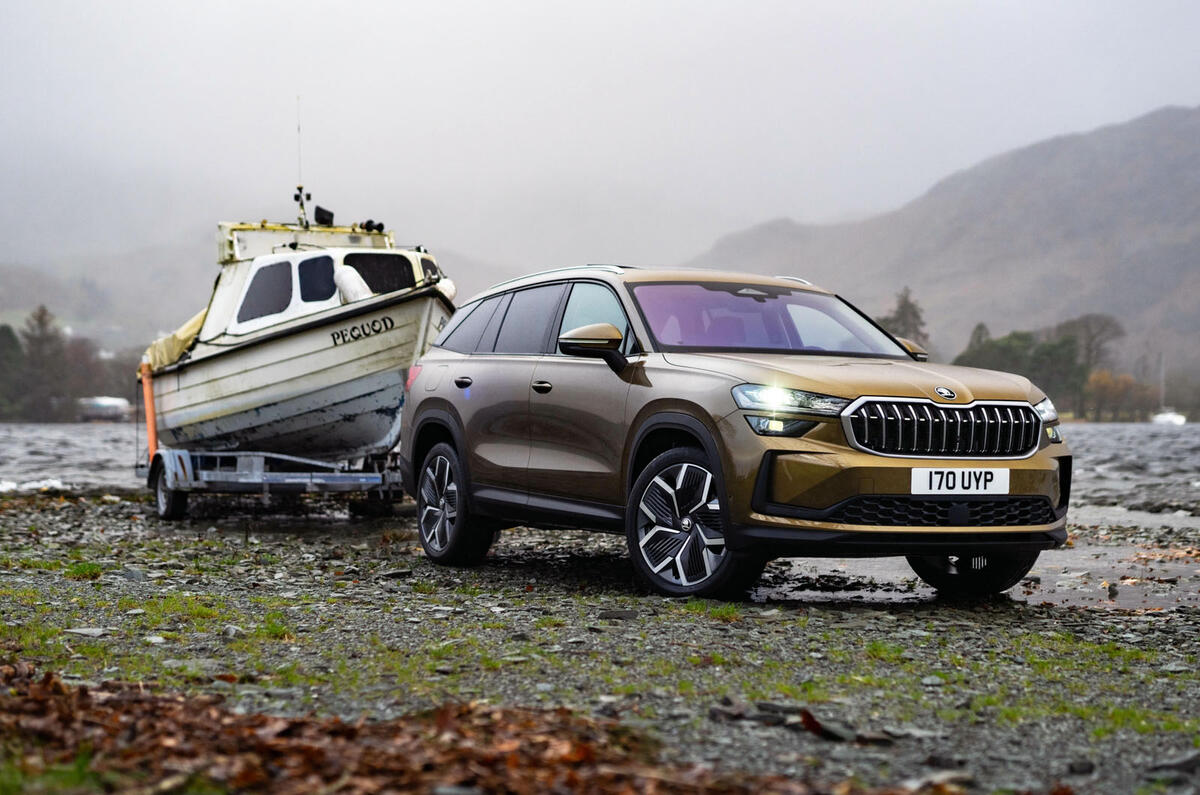




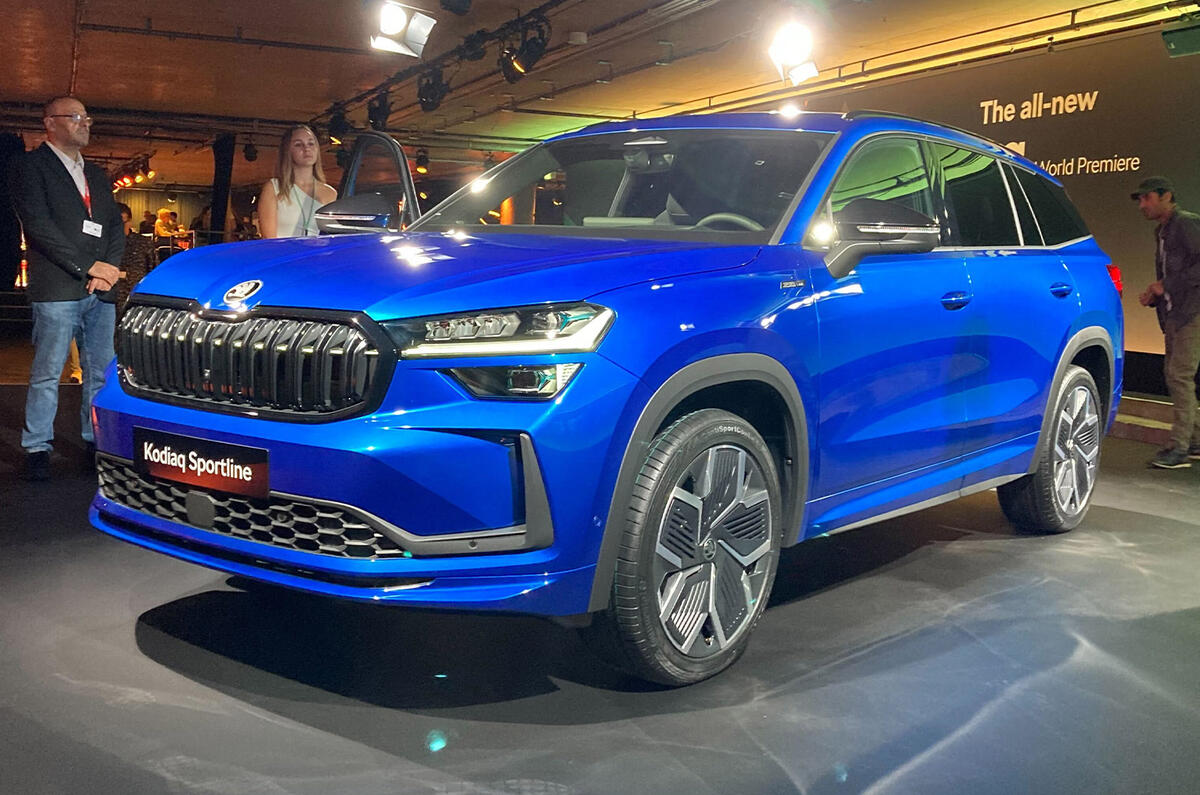
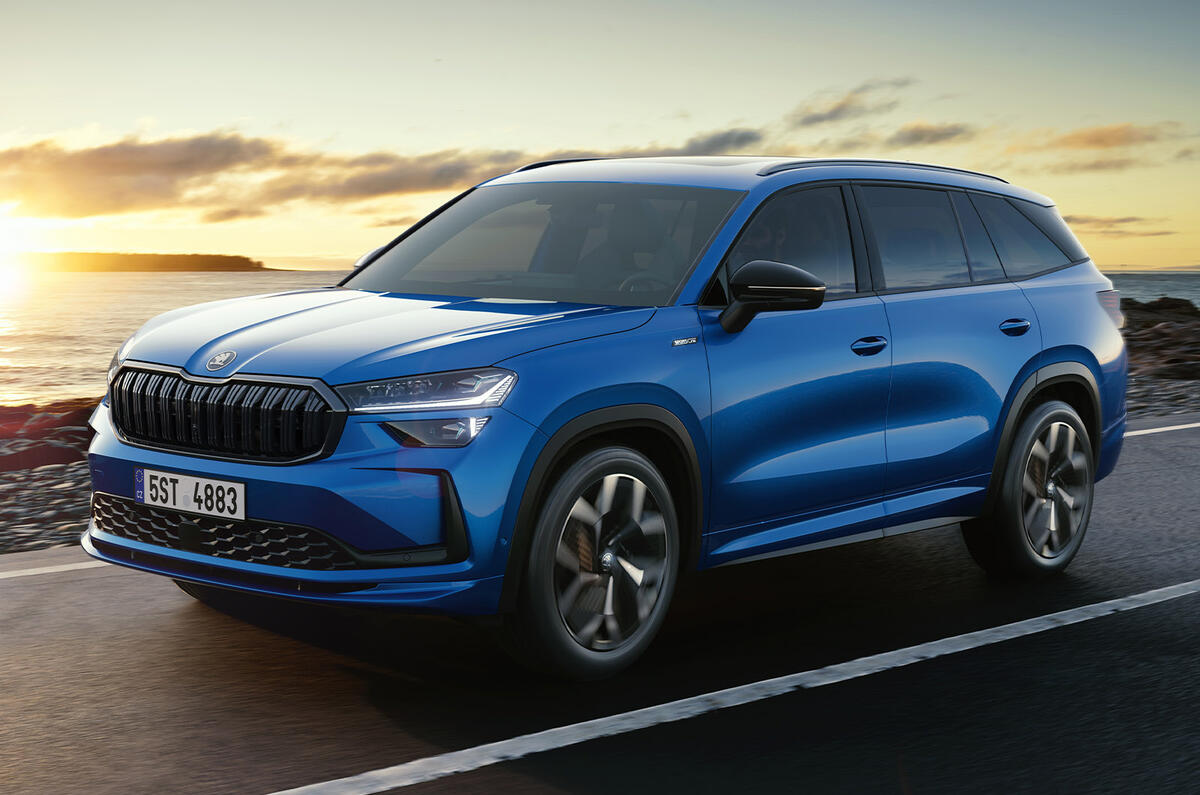

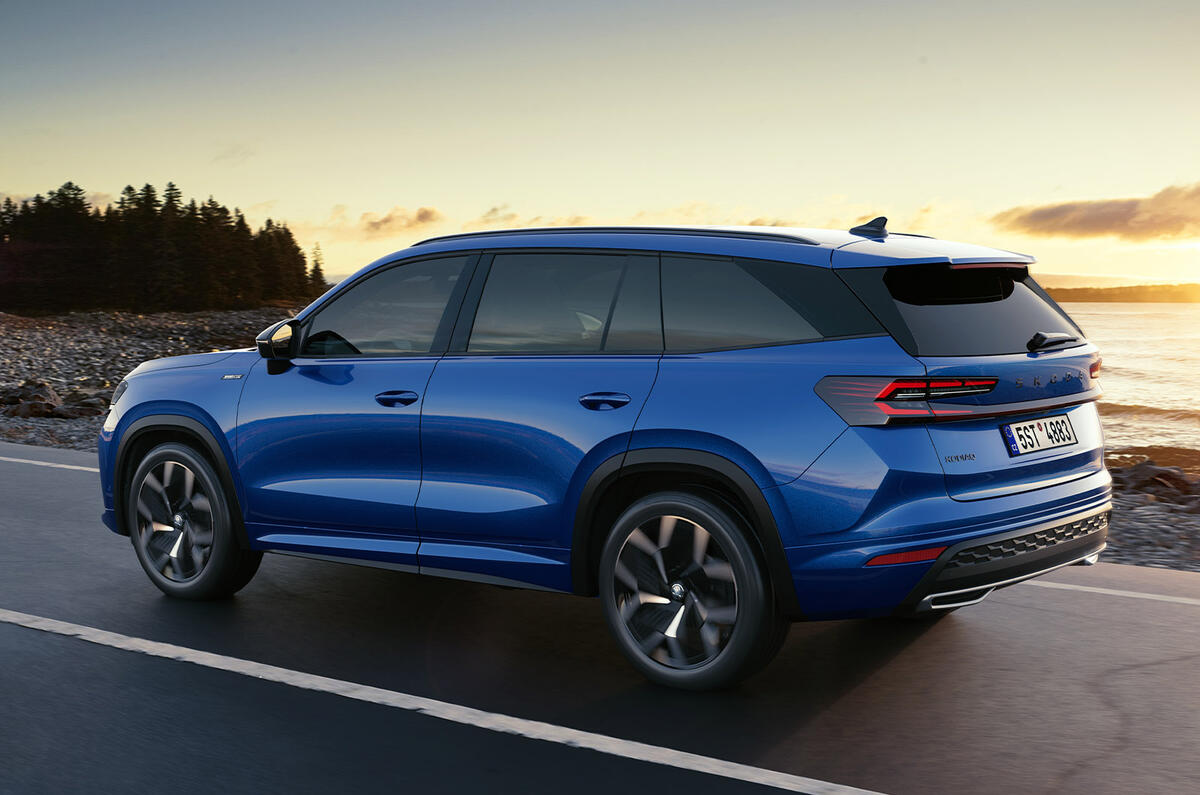







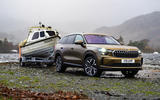

















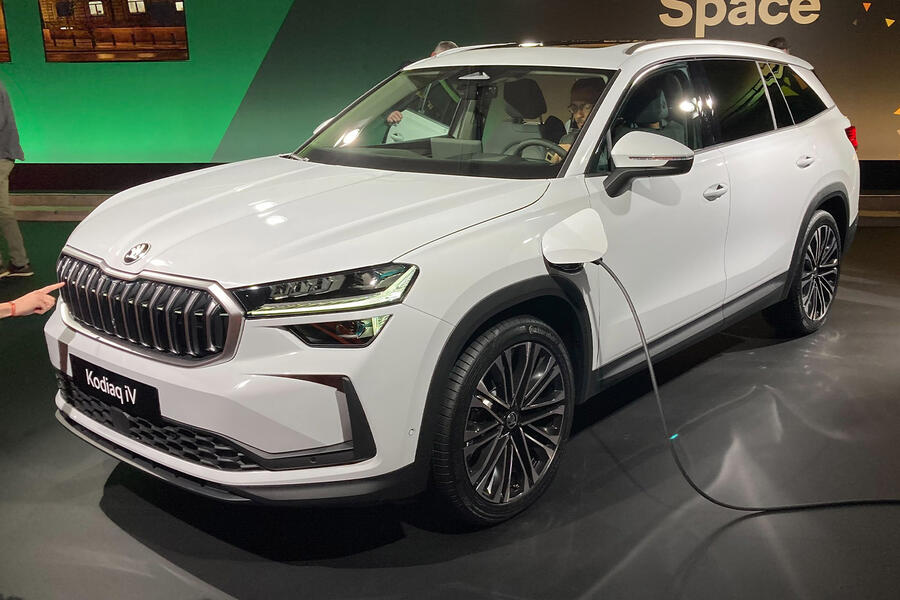
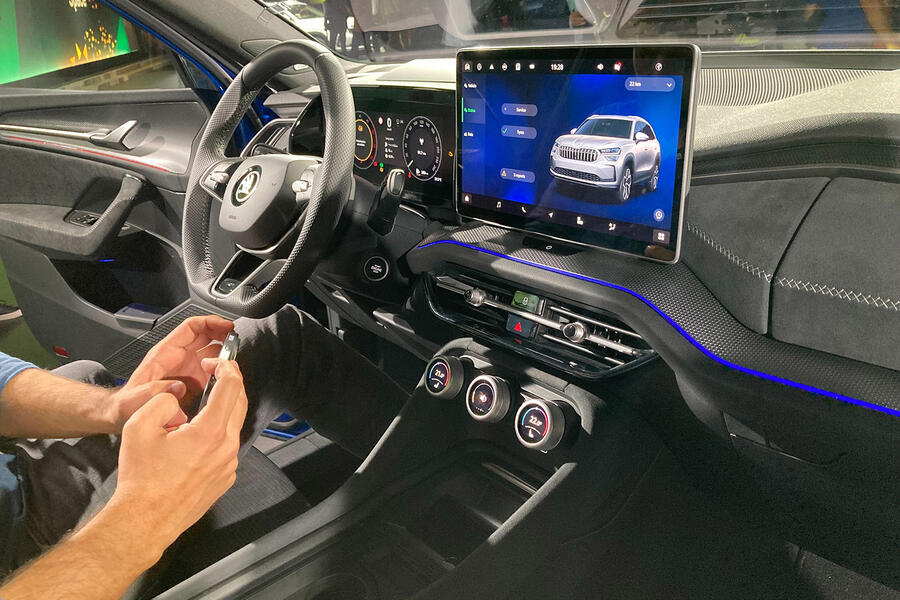







Join the debate
Add your comment
Family transport?, image shows one towing a boat in a rugged landscape, not many of them see terrain like this, they mostly air outside Wine Bars on the Kerb or a yummy mummy Taxi for School runs,I guess it's your choice.
Thankyou for pointing out this car is more likely to dropping kids off at school than dropping a boat off in a lake. Advertising has never ever been so misleading.
The annoying thing about these price rises is that it's pushing regular cars into the Luxury tax band. Then manufacturers are discounting them back below, whilst owners are stuck with the tax for the next 5 years...
It's damaging residuals and as such making finance harder for the newer models, which in turn means manufacturers have to discount even further....
The annoying thing about these price rises is that it's pushing regular cars into the Luxury tax band. Then manufacturers are discounting them back below, whilst owners are stuck with the tax for the next 5 years...
It's damaging residuals and as such making finance harder for the newer models, which in turn means manufacturers have to discount even further....
I'd argue that if someone can afford a £40k car then in the grand scheme of things an extra £400 a year tax is chicken feed. Your problem only appears when those who can't afford a £40k car still buy it.
But you're right, all it means is depreciation becomes a major factor, that's why you should never pay big bucks for a 'value 4 money' brand. Personally I think Skoda are folling in the footsteps of Honda in that they've lost the plot. In years to come I can see several of their models disappearing altogether.
Buy the 36k version which is well under the luxury tax band.